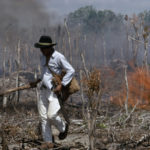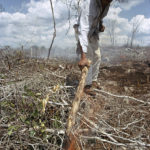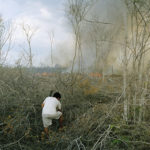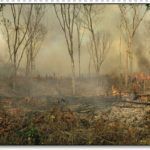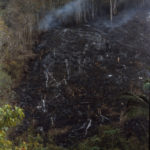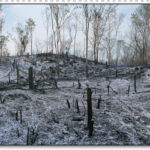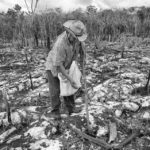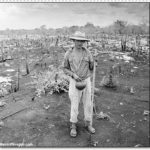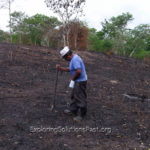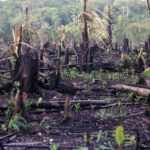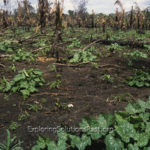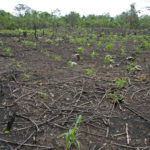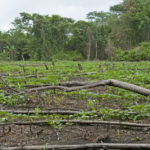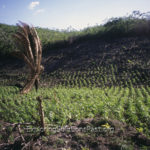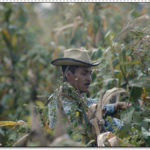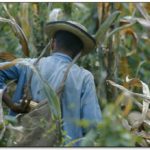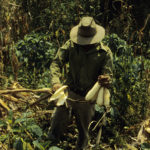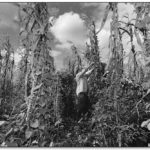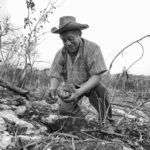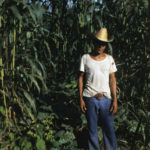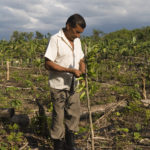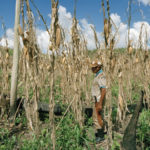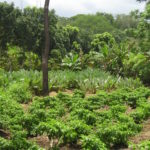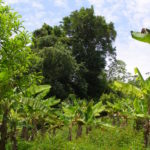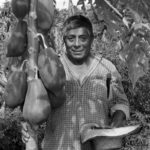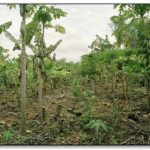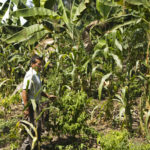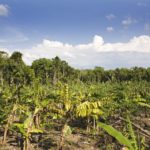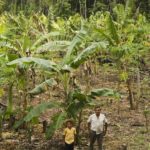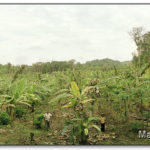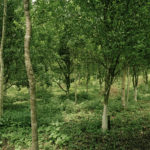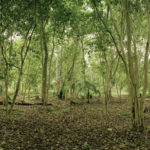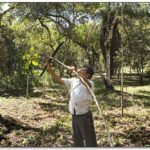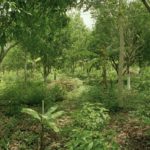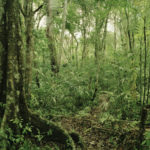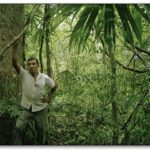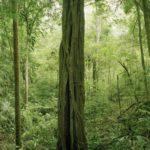Four Stages of the Milpa Cycle:
Over the course of two decades, a milpa cycles through 4 distinguishable stages. Though each stage has defined characteristics, there is overlap as the milpa transitions from one stage to the next. Once a milpa has reached the fourth stage, the cycle can resume. Maya forest gardeners traditionally have more than one milpa each at different stages cycling at the same time. This maximizes multifunctionality of the landscape and creates a mosaic model of crop rotation that ensures diversity in product yields.
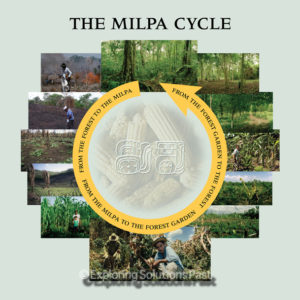
STAGE 1
From the Forest to the Field
The cycle begins when a farmer clears a section of forest in preparation for planting a new field. The desired plot is cleared of underbrush and upper branches of trees are cut back, or slashed. The brush and branches are left to dry and are then subjected to a hot burn that prepares the plot for planting. This controlled burn leaves some tree stumps intact, allowing for root and stump resprouting. The burning process adds minerals and nutrients to the soil that support productive crops.
Once cleared, it is first dominated by annual crops. After approximately 4 years, the field transitions into a managed orchard garden (stage two). Cultivated in full sun, the primary crops of the milpa in stage 1 are the Mesoamerican trilogy of maize, beans, and squash. Intermingled under this low canopy of maize is a dynamic, diverse ecology of tubers, herbs, and other crops. This polyculture includes the spontaneous growth of some plants that we might consider weeds. Utilizing their vast knowledge of hundreds of plant species, farmers use a “select and grow” approach to managing this spontaneous growth. Based on their utility and function in the diversity of the milpa, some plants are allowed to grow and others contribute to mulch. This growth of “weeds” can play a major role in the field to detract pests from the main crops, enhance soil with nutrients, help maintain moisture in the ground, and be consumed by the farmer and their family.
- Hot burn in Milpa
- Initiating a controlled burn
- Start of hot burn
- Controlled burn in Quintana Roo
- Concluding a burn
- Completed burn
- Dario planting his Milpa
- Planting the Milpa after the burn
- Marcelo Medina planting his field
- Sprouting Milpa crop
- First sprouting of the milpa, covering of squash
- Sprouting maize
- Sprouting squash in a new Milpa
- Maize sprouting in a new field
- Beginning the harvest in Chichimila
- Maize harvest
- Maize harvest
- Beans on cornstalk, squash on the ground
- Late harvest of Macal root
- Mature maize, beans, and squash
STAGE 2
From the Field to the Orchard
In the second stage, the farmer continues to encourage the spontaneous growth of woody bushes and trees in the milpa field for their products as well as their shade. S/he transplants perennial fruit, spice, and other trees from the nursery to the milpa. Quick-yielding fruit trees, like plantain, banana, and papaya, are planted and begin to produce within a year. Fruit trees that need more time to produce, such as avocado, mango, citrus, allspice, guava, cherimoya, and ramón, among many others, are planted amidst the maize, beans, and squash to bear fruit in five years. These young perennial trees require labor and skill to maintain, but as they mature, they will be productive with minimal input.
- Chaco building the perennial crop
- End of the wet season maize crop
- Biodiversity in the milpa
- Perennials growing in the milpa
- Dario and his papaya
- Milpa forest garden early succession
- Chaco in his milpa
- Early succession
- Chaco and his grandson in their milpa
STAGE 3
From the Orchard to the Forest Garden
In the third stage, the perennial trees mature and become reliably productive. The fruit trees growth provides a new canopy, blocking the sun and inhibiting most undergrowth. Maize, beans, and squash are no longer viable in the shade, but some useful understory plants, particularly palms, flourish in these conditions. Among the fruit tree orchard, hardwoods, such as cedar and mahogany, are grown to mature over the next decades.
- Chaco with his grandson
- Biodiverse orchard with sun
- Allspice forest
- Chaco pruning hardwoods
- Building the orchard
STAGE 4
Forest Regeneration
In stage four of the milpa cycle the forest garden transitions into a hardwood forest. The hardwoods rise above the lower trees to create a tall canopy. The milpa cycle has come full circle and now the regenerated forest bears much in common with the plot before the forest gardener cleared and burned it two decades earlier. It is now a managed forest with light undergrowth dominated by palms and shrubs. Some farmers also have a designated zone where useful, edible and beneficial understory plants are encouraged.
The forest gardener will nurture hardwood trees to grow and mature. He or she can then harvest the trees for use or sale when they decide to prepare the plot for the planting of a field once more. The milpa cycle begins again.
- Ramon under the canopy
- Chaco in his reserve
- The Maya Forest
